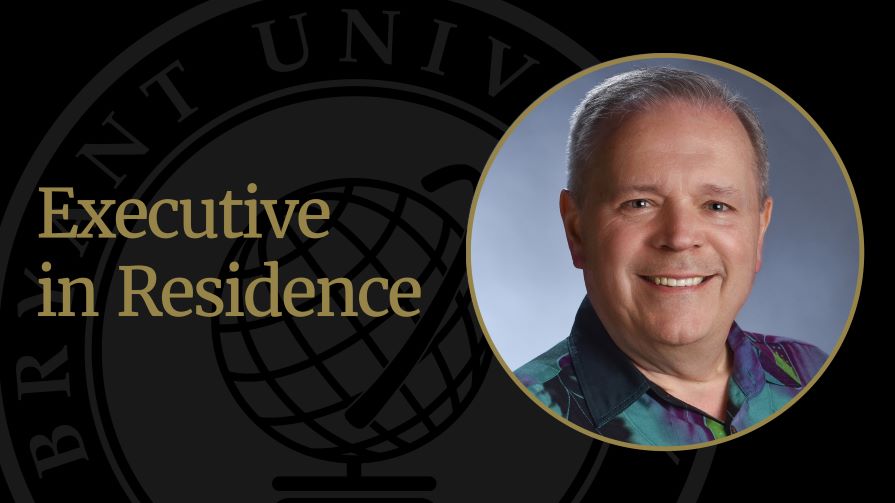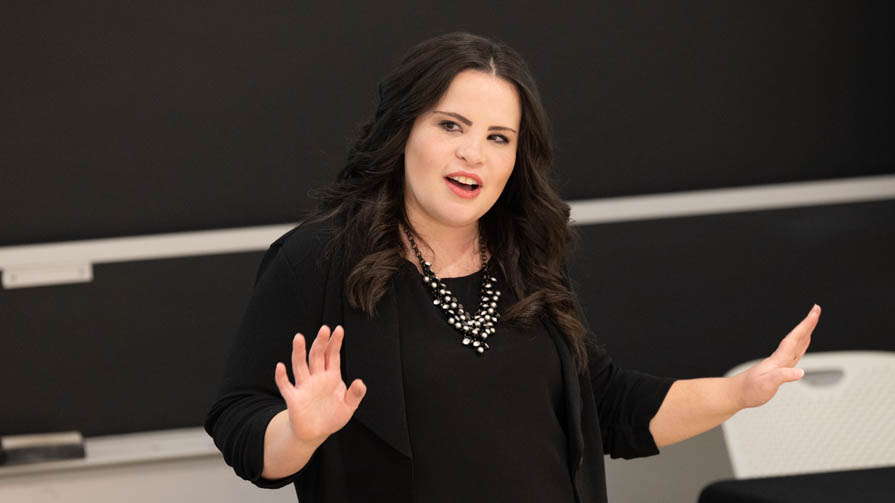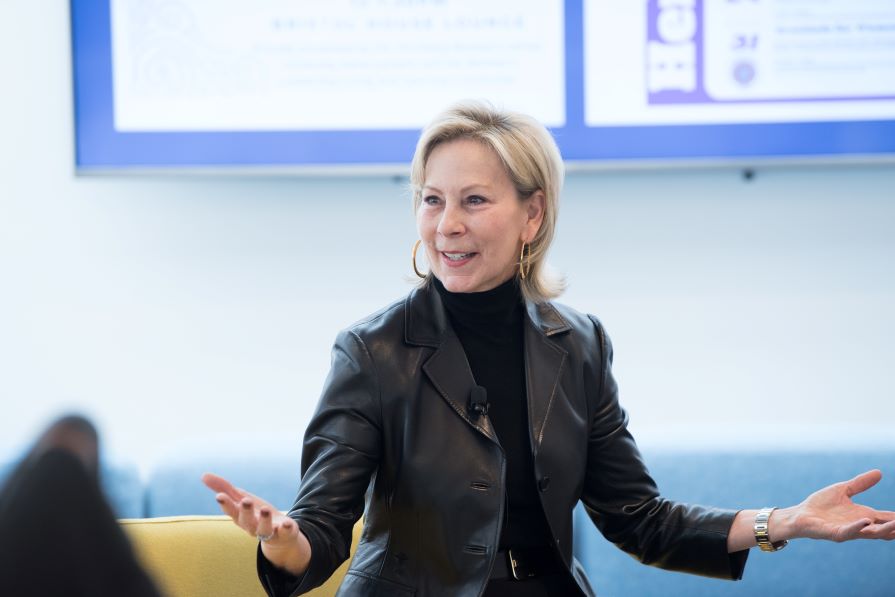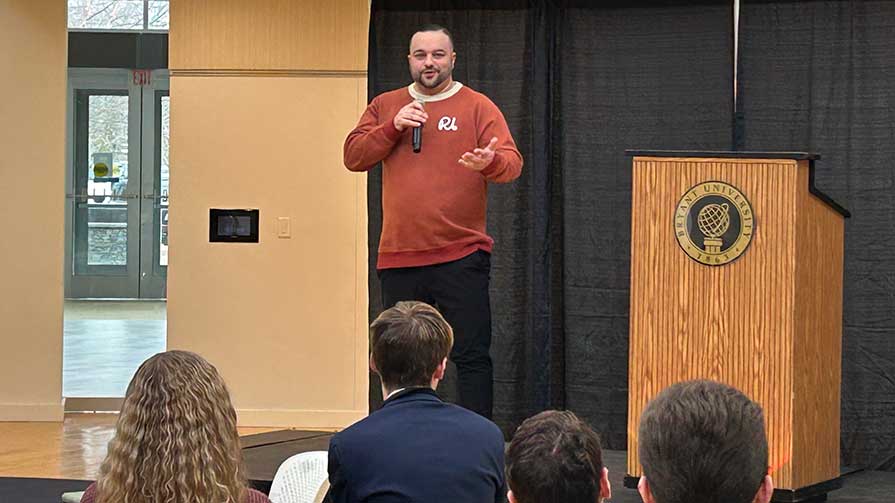SMITHFIELD, RI - Last week, about 800 Bryant first-year students emerged exhausted but invigorated by their Bryant IDEA experience with new ways of looking at the world. The Bryant IDEA (Innovation and Design experience for all) is a three-day, high-energy, immersive design thinking boot camp that strips away students’ preconceived ways of learning. This innovative program challenges students to shift their intellectual focus from getting the “right” answer or “earning an A” to developing characteristics such as curiosity, critical thinking, creativity, collaboration, perseverance and grit. It sets a foundation that prepares future leaders for success no matter what the AI and data-driven future brings.
IDEA challenges students to shift their intellectual focus from getting the “right” answer or “earning an A” to developing characteristics such as curiosity, critical thinking, creativity, collaboration, perseverance and grit.
Students get through this rigorous and immersive experience with the support and guidance of almost 200 faculty, staff, student, and alumni mentors, as well as more than 100 alumni and regional business leaders who serve as judges. For three days Bryant’s entire campus becomes a Silicon Valley start-up environment as students dig deep to come up with solutions for one of 35 participating regional businesses.
Practicing what they teach
Bryant faculty developed the IDEA the program in 2013 based on the design thinking method developed by IDEO, a Palo Alto-based global design firm. Students follow the proven method for developing better products, services, and processes used by global corporations like Apple, Amica, CVS, Starbucks, Nike, and Dyson, to name a few.
Practicing the kind of design thinking innovation they teach, Bryant faculty have continuously refined and improved the program over the years. “Each year, after we complete a program, we always ask for feedback from all of the faculty, staff, student mentors, and the participants,” explains Allison Butler, Associate Professor of Psychology and Director of IDEA. “We look at how we can embrace this critical feedback to make the experience even better.”
Practicing the kind of design thinking innovation they teach, Bryant faculty have continuously refined and improved the program over the years.
The IDEA design thinking steps are: empathize, define, ideate, prototype, and test. In the spirit of continuous iteration and improvement, faculty leaders shifted this year’s program design to place more emphasis and time on step one—empathize.
Building empathy is the key to developing truly innovative breakthroughs, and it is “arguably the most challenging part of the entire design thinking process,” says Allison Butler, Ph.D., Associate Professor of Applied Psychology, Director of the IDEA program, and an expert in social cognition and learning. “We created empathy maps and journey maps—tools that help design thinkers craft meaningful insights about the user experience.”
“By looking at the entire journey of a user, you can see where a transformation needs to take place, and get to a solution that delights the user,” says Lori Coakley, Ph.D., Professor of Management.
Bryant faculty are sought-after design thinking experts
With their years of experience working on IDEA as well as design thinking courses and seminars for other educational institutions and industry, Bryant faculty members have become increasingly sought-after design thinking experts. They’ve created and delivered custom education programs at major regional and global organizations including Fidelity Investments, Citizens Bank, FM Global, Hasbro, Amica Insurance, CVS Health, the Rhode Island National Guard, and the Lincoln School.
Several IDEA co-founders and committee members have conducted research written extensively on design thinking, innovation, and creativity. Professor Butler and IDEA co-founder Trustee Professor of Management Mike Roberto, D.B.A. published their research in Research-Technology Management, the leading peer-reviewed journal focused on the practice of innovation. Professors Coakley and Roberto co-authored an article in the American Management Association’s AMA Quarterly and Playbook Blog titled “Design Thinking: Empathy Tops Data in Understanding Customer Behavior,” and, Professor Roberto has written a new book out this month titled “Unlocking Creativity: How to Solve Any Problem and Make the Best Decisions by Shifting Creative Mindsets.”
Inspiring a culture of innovation and transformation
In addition to the transformation experienced by students and the continuous innovation practiced by faculty, IDEA has reignited a long-held Bryant tradition and university-wide culture of innovation that continues to build momentum.
After the successful inaugural IDEA program in 2013, faculty and leaders recognized that this new approach to learning would require a new kind of space that was more conducive to exploration, ideation, prototyping, iteration, and active collaboration. And, so began the immersive, integrative design thinking process that led to the building of the award-winning Quinlan/Brown Academic Innovation Center (AIC) in 2016. The Quinlan/Brown Academic Innovation Center is both the culmination of a successful design thinking process and a catalyst for continuing innovation in teaching and learning at Bryant.
“Through IDEA,the language of design thinking, creativity, and innovation has become a regular part of the vernacular on campus, not just for students and faculty, but also for staff, alumni, and partners of the University.”
“The Academic Innovation Center is a perfect example of the design thinking process,” says Chris Morse, Ph.D., Associate Professor of Communication and IDEA co-founder. “It’s really the pinnacle of design thinking innovation. It leads to better approaches to help students learn by increasing their curiosity and excitement for what they are learning.”
“Students are starting to approach their projects using the IDEA processes, and have incorporated principles of design thinking in their work. Faculty are designing courses that incorporate IDEA because they are so passionate about the program.” - Chris Morse, Ph.D.
“Students are starting to approach their projects using the IDEA processes, and have incorporated principles of design thinking in their work. Faculty are designing courses that incorporate IDEA because they are so passionate about the program,” adds Morse.
“Through IDEA,the language of design thinking, creativity, and innovation has become a regular part of the vernacular on campus, not just for students and faculty, but also for staff, alumni, and partners of the University,” adds Butler. “Walking around campus, you can hear people talking about wild ideas, prototyping, and iterating to come up with better ideas. I’ve really seen a positive difference in the culture since we started this program."





